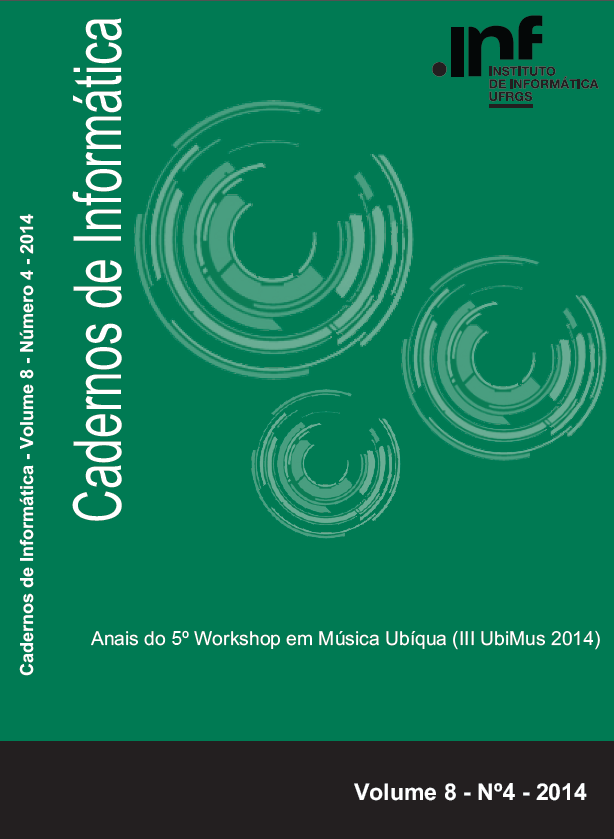Suporte para a Criatividade Musical Cotidiana: mixDroid Segunda Geração
Resumo
This paper focuses on mixing as the object of study of creativity-centered interaction design. We applied the time tagging metaphor to develop a new ubiquitous music prototype and carried out experimental work to investigate the relationships between the technological support strategies and their creative yield. A musician produced 30 sound mixes using different tools and similar sound resources in the same location. From that output, three creative products – each of approximately 3 minutes – were chosen. For the first session he used the sound editor Audacity. The second session was done with the ubiquitous music system mixDroid 1.0 or first generation (1G). The third session involved the use of a new prototype – mixDroid 2.0 or second generation (2G). The time invested on each mix was: 97 minutes using Audacity; 6:30 minutes using mixDroid 1G; and 3:30 minutes using mixDroid 2G. 24 subjects evaluated the three products through the Creative Product Profile (CrePP-NAP) protocol. Results indicated very similar profiles for the mixDroid 1G and 2G products. On a scale of -2 to +2, differences weren't larger than 17 cents. Scores for the descriptors 'relaxing' and 'pleasant' were 0.96 and 1.42 points higher for the Audacity-made product, but variations among scores were also high. Originality and expressiveness were slightly higher for Audacity – 21 and 42 cents respectively. In contrast, the relevance factor of the mixDroid 2G product was 25 cents higher than the score given to the Audacity product. We conclude that the application of the time tagging metaphor boosts the efficiency of the creative activity, but that boost does not extend to the creativity profile of the products.Downloads
Não há dados estatísticos.
Downloads
Publicado
2015-07-02
Como Citar
de Farias, F. M., Keller, D., da Silva, F. P., Pimenta, M. S., Lazzarini, V., de Lima, M. H., Costalonga, L., & Johann, M. (2015). Suporte para a Criatividade Musical Cotidiana: mixDroid Segunda Geração. Cadernos De Informática, 8(4), 18–29. Recuperado de https://seer.ufrgs.br/index.php/cadernosdeinformatica/article/view/v8n4pp18-29
Edição
Seção
Artigos Completos

